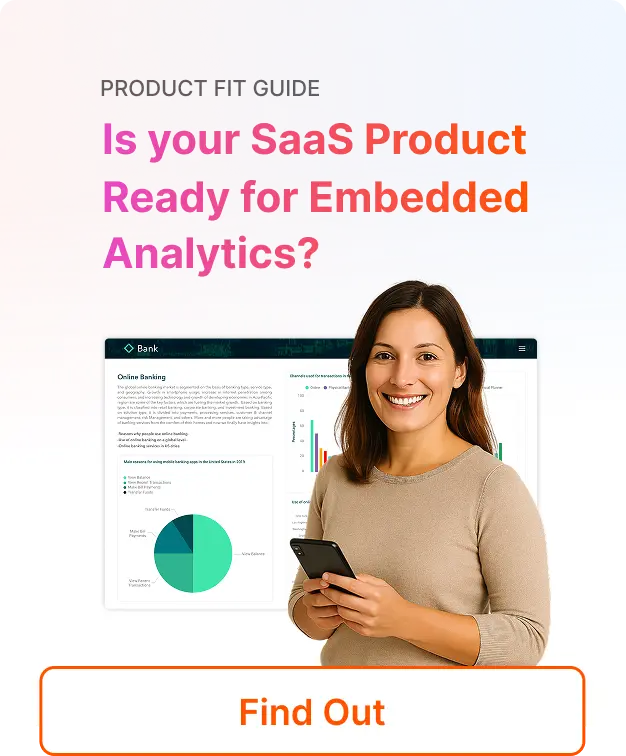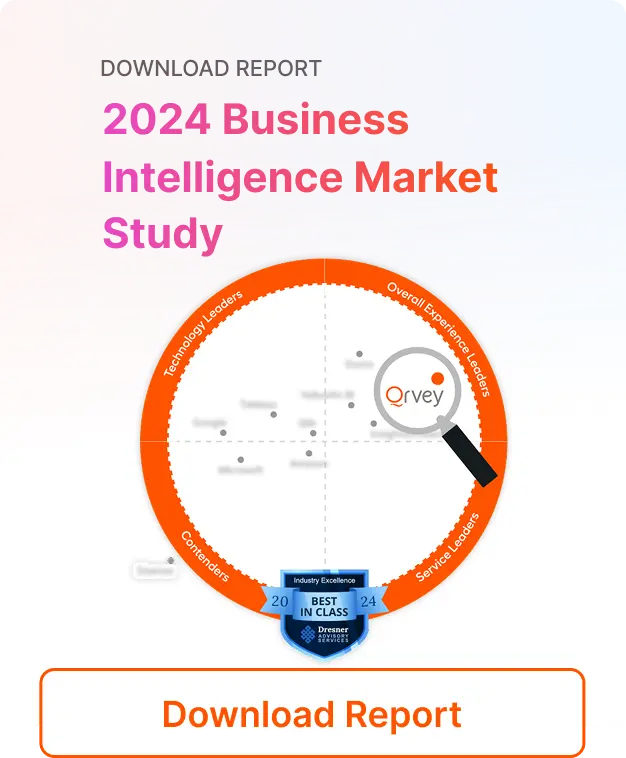There are more than 7.5 million Google search results for the keywords – enterprise software purchase regret – proving that oftentimes – despite well laid plans, thorough evaluations, and customer references companies end up with the wrong software solution.
The challenge of software regret can be compounded when that software is embedded into your application making removing it not only an internal issue but also a user experience challenge. Despite the pain, once you realize the software you purchased won’t meet your business goals, it’s time to make a change.
“Hanging onto a bad buy will not redeem the purchase” – Terence Conran
However, the thought of replacing embedded software can be overwhelming. You may have been the person who advocated for the new offering, asked your team to invest countless hours evaluating the solution and ultimately saw sub-par results from what you were promised. You probably know it’s time for a change, but your reputation may take a hit and it’s scary to do it all over again.
But, it is possible to become the hero again by avoiding past mistakes, choosing the right solution and implementing it quickly. In this 3 stage article we will first cover how to know it’s time to take the leap, cut the cord, go back to square one or any other idiom of your choosing, and then what to look for as you embark on a new relationship.
1) Software Vendor Timelines Longer Than They Said it Would Be
Product managers are far too practical to simply rely on their gut instinct that something is amiss with a purchase they made. As positive people with bold visions, admitting something isn’t working can be the biggest challenge to making an improvement. Fortunately, PMs can rely on their stated business goals they established and certainly well documented when evaluating solutions. Below are the three biggest reasons PMs tell us they began looking for a new solution and stopped hoping things would turn around.
You still aren’t implemented, months after the vendor said you would be.
Implementation may seem just beyond your grasp, enticing you by getting ever closer but remaining elusive. Delayed implementation is the symptom of greater issues, all of which suggest long-term viability concerns for your software:
- Developers claim to be too busy – The solution is too complicated for developers to make expected progress in a reasonable amount of time. It may require excessive customization, backend coding to connect to your systems or simply isn’t stable. While these issues could be overcome to reach an MVP, once live, these systemic problems could cause roadmap delays, maintenance issues, frustrated customers and limited adoption.
- Doesn’t easily connect to all your data – Software that fails to offer easily understood and well-documented APIs to connect to data make it difficult to connect and maintain connections requiring constant upkeep and maintenance.
- Doesn’t provide the expected end-user experience – Before launch, you want any third-party software to infuse seamlessly into your software. Some solutions may suggest this is possible but only offer rudimentary capabilities, require custom code or paid professional engagements to deliver on the pre-sales promise.
Any of these factors are red flags for your product and development teams. Even if you “duct tape” these issues, your teams will constantly struggle to maintain and improve the offering, reducing available developer cycle time for other development priorities and frustrating customers.
You’re launched, but your business objectives aren’t being met.
Perhaps you’ve partially or fully implemented the solution you purchased. Going live is an exciting step towards delivering new features and capabilities to your users. However, going live is just the beginning. Below are the challenges you’re probably facing if you’re looking for a new solution.
- Developers are complaining. Developers prefer to spend more time innovating and less time fixing buggy third party software. Developer frustration, slowing burn-down rates or laggy response times are a good indication the software purchased may not be fit for purpose.
- Many “great” features aren’t being used. When you purchased the software, some of the more innovative features were likely appealing and justified more expensive software. However, you need to meet your users where they are and if ultimately they aren’t using the newest features you might want to opt for a less expensive solution. The result is a simplified user experience, lower costs and happier customers. Note – you don’t want to totally mortgage the future for today so find a vendor with a good product today and a meaningful roadmap to ensure ongoing innovation.
- KPIs aren’t being met – You’ve invested in a new embedded capability to meet certain business objectives. Some of these might include; upselling customers, increasing engagement or reducing churn. While it takes time to meet these goals, failure to see any leading indicators could suggest the capability deployed isn’t meeting user expectations. This could be an implementation issue but often is the result of purchased software not working as intended.
The vendor isn’t supporting you the way you expected.
- Support isn’t up to snuff. Even the easiest to use embedded software will run into challenges from time to time. Having support which understands the unique challenges embedding creates and the importance of solving those challenges quickly is critical. This requires a support staff that has expertise working with product and engineering teams as opposed to IT teams, as well as extensive documentation. Some companies suggest they offer this, but few truly do.
- Roadmap features promised haven’t materialized. While roadmaps are no guarantee, they do play a critical role in buying decisions, especially when it comes to embedded software. If you are making roadmap decisions and promising capabilities to your customers and users based on promises that your embedded analytics vendor makes, but they don’t materialize, that damages your reputation in your market. This isn’t a good partnership.
- You’re just not that important to them (once you signed). Large software vendors are very focused on their largest customers. While your customer account manager will invest time in your relationship and care about your success smaller companies are often second when it comes to premier support or other services and have little say on driving new features and capabilities. Partnering with young, growing vendors might seem to be more risky, but it could lead to a much more powerful partnership.
Action to Take:
Overall, even the most well researched software can turn into the wrong choice. However, the benefit of working in a SaaS environment is contracts tend to be short, customers expect applications to change and development teams work in ongoing sprint cycles to account for change. Ultimately though, the product manager, product owner or VP Product needs to admit they made a mistake, rally the troops to find the right solution and work hard to ensure they don’t make the same mistakes twice – which we’ll explore in our next article.
2) Don’t Embed the Wrong Vendor Twice
Now let’s discuss how to avoid making the same mistakes twice. Once you realize it’s time to replace the solution you purchased, it’s critical to understand what went wrong in the buying process in order to avoid it in the future.
Don’t be dazzled by any person or company.
The Problem: Unfortunately, the old adage “No one ever got fired for buying IBM” still lingers today. It is easy to get enamored with large companies and believe that their size or large recent fundraise will have a correlation to your success. It may even feel like a safe choice. However, for a lot of these analytics vendors, embedded solutions are an afterthought.
For example, analytics companies have built their product and organizational structure for enterprise use cases (and some of them are good at those use cases) rather than for embedded use cases for SaaS products. They just expect customers to deploy an army of developers to jam that square peg into that round hole. Salespeople believe the hype and will focus on success stories while ignoring what could be warning signs the solution isn’t right for you.
Ultimately, this puts the onus on you to truly understand what your customer wants, what your customers will actually use (and pay for) and if what’s being positioned is the current or future state of the software.
The Solution: Go into any purchase process with an understanding of what is critical, what is nice to have and what isn’t necessary and stick to your list. While having holographic charts which render your stock portfolio in 3d inside the metaverse might demo really well and seem compelling – it’s just not something the market is ready for and something that shouldn’t influence your decision. So, choose a company that understands your use case and pain points, not just one that plays in an adjacent space.
Make Sure it Connects to your Tech Stack (and data)
The Problem: During a sales process, vendors will say API as if it’s an easy button to integrate everything in your tech stack.
That’s simply not true.
Data especially comes in different forms, is organized in different ways and has a variety of security-related conditions. New data sources are added often and times customers want to bring their own data as well. This result is never a one-size fits all answer.
The solution: Conduct a comprehensive proof of value, proof of concept or pilot. Any company wanting to ensure your success will be more than willing to commit time and resources to ensuring you make the right decision.
During this POV rely on real data and data structures to fully embed a module of the offering into a sandbox version of your software. If you run into any hiccups along the way (and you will) vet the support center, articles and community to understand how easy it is to resolve issues.
Thoroughly Test White Labeling Capabilities
The Problem: White labeling – the ability to match third party software to yours – must go beyond colors and fonts. Instead, modern applications must deliver a consistent user experience, transitions between experiences and a wholly infused approach.
The end user should never know third party software sits within your application. However, many legacy vendors aren’t built to allow for this and instead offer rudimentary white-labeling leaving you with a frankenstein application.
The solution: Understand what makes your application unique. Involve your designers, UX experts and developers to not only embed capabilities which integrate into your backend but also seamlessly integrate into your front end. Test these capabilities with your end users on staging environments or via sites like UserTesting.com. Assess how easy it is to make updates, how far you can go and how software updates could impact any customizations you made.
Only then will you have the confidence to believe you’ve found the right solution.
3) Eventually Making the Right Choice
Many vendors consider embedding to be an afterthought. There are few industries where this is more prevalent than the analytics space.
Embedded analytics has already gone through several generations of development. The first era of embedded analytics was monolithic and dominated by vendors like Microstrategy. While embedding was secondary for these vendors they sold to companies with large development teams who could invest the time in embedding their solution.
The second generation of embedding was focused on iFrames and was ushered in by vendors like Logi Analytics. These solutions were easier to integrate and offered some customization but struggled to fully infuse into SaaS applications – especially in areas of self service.
Finally, the current generation of vendors launched – including Qrvey. These solutions offer more capabilities, embed easier, infuse completely into the UI/UX and leverage microservices from the world’s leading companies.Qrvey was born out of the failures of Gen 1 and Gen 2 analytics vendors.
Frequently, customers of other solutions such as Sisense, Logi or Tableau will approach us with frustrations they’re having with their current vendor – many of which were highlighted in this series. They had intended to launch analytics to their end users, were wowed by polished demos but ultimately they never realized the potential of the solution.
Some have been live in the market with limited or waning adoption while others never got off the ground.This can be frustrating, but with analytics becoming a commonplace expectation for customers, simply choosing to do nothing or delivering an inferior experience isn’t an option. Hence, Qrvey.
About Qrvey:
- Designed exclusively for SaaS companies – At Qrvey, embedding isn’t just a feature, it’s our passion and our entire focus.
- Built by industry leaders with expertise in embedded analytics – Qrvey’s team has decades of experience in business intelligence and embedded business analytics space and has helped thousands of SaaS companies reach their analytics goals.
- Relentless commitment to customer success – At Qrvey, we’re not successful unless our customers are successful. Our customer experience team is second to none and can provide you with all of the tools and support you need.
- Thorough evaluations ensure success – Far too often, companies expect you to make big decisions after just a cursory evaluation. Qrvey provides a thorough trial of our platform to ensure we’re the right fit for your needs.
- A best-fit licensing model that just makes sense for SaaS businesses – Qrvey’s pricing and licensing was built with SaaS companies in mind and encourages quick adoption and increased engagement.
- Implement and launch quickly – Qrvey includes pre-built widgets and a powerful API that makes implementing powerful analytics to your users faster than any other platform.
- Designed to make updating painless – Qrvey is 100% SLDC compliant with separate development, testing and production environments and all of the tools you need for the seamless deployment of analytics to your customers.
While we can spill much more ink on why Qrvey is designed for the modern technology stack, we believe it is ideal to share the video below which shows Qrvey in action. It can be worrisome to replace the software you invested so much time, money and hope into.
However, like most PM decisions, it’s ultimately not a business decision. Is the software allowing you to meet your stated objectives? If the answer is no, it’s time to rip and replace.
Learning from past mistakes will make the next decision more thorough, robust and defensible. And you will probably wind up with a better fit for your product.So go ahead – be your product’s hero again and request a demo of Qrvey.

As a Senior Content Writer, Megan collaborates with Qrvey’s subject matter experts to develop business and technical content supporting SaaS product managers and developers. Megan has over 25 years’ experience writing about data, analytics, security, and other IT topics. When not behind a computer screen, Megan teaches group fitness classes and gallivants around Maryland’s woods hiking, mountain biking, and foraging.
Popular Posts
Why is Multi-Tenant Analytics So Hard?
BLOG
Creating performant, secure, and scalable multi-tenant analytics requires overcoming steep engineering challenges that stretch the limits of...
How We Define Embedded Analytics
BLOG
Embedded analytics comes in many forms, but at Qrvey we focus exclusively on embedded analytics for SaaS applications. Discover the differences here...
White Labeling Your Analytics for Success
BLOG
When using third party analytics software you want it to blend in seamlessly to your application. Learn more on how and why this is important for user experience.









